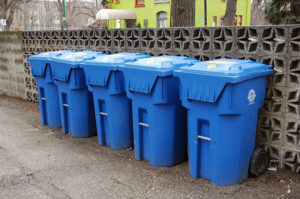The Melted Recycling Bin: A Personal Finance Story (Chap. 9)
Authors’ note:
Explaining personal finance can be pretty dull. That’s a problem, if you need to learn about personal finance.
On a plane from St. Louis to Seattle, I decided to try and fix the problem. What if I could wrap some accounting concepts inside of a quirky (funny?) short story? My goal here is to present some information, and then add another step in the story. So, when you get to the end, you’ve been reminded of an personal finance concept- but you’ve received the information in a light-hearted way.
This blog post explains compounding interest, and how this concept works in favor of investors- and works against borrowers.
Anyway, that’s the goal here. The stories are written in chapter order, so that there is a logical flow for the reader. Enjoy!
Every year, you think that you can avoid it- and every year, the heat shows up.
The weather in St. Louis was traditionally 90 degrees and 90 percent humidity from late May to mid-Sept. It was nearly July, and Greg thought they had dodged a bullet- but no such luck. Temps had hit 100 degrees for the last two days. Greg turned off the car and braced himself for the short walk to the office.
He called Tony as he checked email. “I heard that it’s so hot in Phoenix that the recycling bins are melting!”, Tony laughed. “American is cancelling flights because their commuter planes can’t fly if the ground temperature is over 117 degrees- pretty wild.” Tony shifted in his chair. “OK- open that excel document and let’s talk about compounding interest.”
Click here for free chapters from my ebook: How To Save, Invest and Manage Debt.
Tony started: “So what you need to know- sort of the headline- is that compounding interest work for you as an investor, and it works against you if you borrow money.”
The spreadsheet listed a $1,000 investment at a 5% interest rate, with total annual interest of $50.
“Compounding interest is defined as earning “interest on interest”, and when you compound interest, your total earnings can be much higher.” Tony glanced at the spreadsheet.
“Line 1 is pretty easy, because in year one, you earn $50. Here’s the key point: in year two, the investor keeps the original $1,000 invested, plus the year one earnings of $50. The total amount invested in year two is $1,050.
Greg looked at year 2: $1,050 invested at 5% = $52.50 in interest. “OK- I get it”, Greg said, “by investing an extra 50 bucks, I earn $52.50- or $2.50 more than in year one- right?”
“Yeah, you got it- and the returns get bigger over time.” Tony paused. “Think about a bucket. You can envision more money going into the bucket each year, since you leave your earnings in the bucket. If you took each year’s interest out, you’d only invest the original $1,000 each year- and you’d end up with far less money over time.”
Greg nodded as he glanced at the thermostat. He had the office temperature set at 78 degrees overnight, and the A/C was struggling to keep up. He shook his head. “Boy, I hope that rain tonight breaks this heat wave- it’s ridiculous.” He glanced up, thinking. “I see what you’re saying- that bucket example makes sense to me.”
Tony continued: “So, compounding interest works for you as an investor, because you can accumulate wealth faster. Now, it works against you as a borrower. Open the other spreadsheet that I gave you.”
Greg glanced at the second spreadsheet. “OK- the danger of carrying credit card balances.”
“Exactly- it can be a real death spiral for credit card users.” Tony chuckled. “As you can see, if you don’t pay off your balance in full, you owe interest.” He leaned toward his laptop. “On line one, the borrower must pay 1% a month, or 12% a year. So, assuming a $500 credit card balance, the consumer pays 1% times $500, or $5 interest in March. The new balance owed as $505.
Greg scanned line two. The borrower used the card in April and made an April payment, but the ending balance owed was $625.
“See- the cardholder’s additional $120 in spending increased the card balance from $505 to $625.” Tony pointed out. “Now the cardholder must pay 1% monthly interest on an even higher balance: 1% times $625 is $6.25. There are two reasons why the monthly interest increased: the $5 March interest plus the $120 additional spending in April.”
Click Here For Free Report: 10 Great Resources For Personal Finance
Greg pushed back from the table. “Wow- over time, I can see how that interest would add up.”
“Yup- in theory, that original $5 in March interest may earn interest for the credit card company for months- even years. If that $5 remains in the bucket, it will earn interest.” Tony leaned back in his chair. “That’s why carrying a credit card balance is such a bad idea, and why credit card issuers are now required to clearly explain this stuff now. Consumers can really get themselves in trouble.”
Greg thanked Tony and jotted down some notes after he hung up. The grass needed to be mowed, he thought. If might be cool enough by 3am….
Ken Boyd
Author: Cost Accounting for Dummies, Accounting All-In-One for Dummies, The CPA Exam for Dummies and 1,001 Accounting Questions for Dummies
Co-Founder: accountinged.com
(email) ken@stltest.net
(website and blog) https://www.accountingaccidentally.com/
(you tube channel) kenboydstl
Image Dano, Neat recycling bins, (CC By 2.0)

